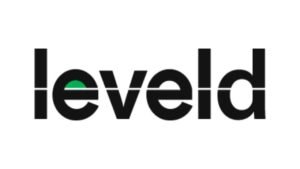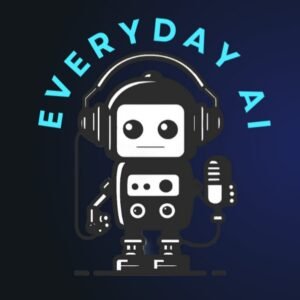After 25 years in the technology space and a full year of hands-on experience with AI content creation, I’ve learned that content optimization isn’t just about pleasing search engines – it’s about creating value that resonates with real people. As someone who’s published multiple e-books and built numerous WordPress websites, I’ve seen the content landscape evolve dramatically, especially with the emergence of AI writing tools.
Most recently I joined a skool community where I’ve been gaining even more insight into content creation using AI as an enhancement tool in the process.
The Content Creation Crisis: Why Traditional Methods No Longer Cut It
Remember the days when I would spend countless hours crafting blog posts, constantly second-guessing whether my content would rank well? Like many of you, I found myself caught in an endless cycle of keyword stuffing and format tweaking, only to see minimal results. The truth is, content creation has become increasingly complex, with over 7 million blog posts published daily. Standing out isn’t just challenging – it’s overwhelming.
The AI Revolution in Content Optimization
Everything changed when I discovered AI content optimization tools. As someone who’s completed over 20 technology-based projects, I approached these tools with both excitement and skepticism. What I found transformed my entire content strategy.
How AI Content Optimization Actually Works
Let me break down the process I’ve refined over the past year:
1. Strategic Planning
– Content analysis using AI SEO writing tools
– Keyword research and intent mapping
– Competition analysis and gap identification
2. Content Enhancement
– Natural language processing for readability
– Semantic relevance optimization
– Structure and format optimization
3. Performance Tracking
– AI-powered analytics
– Real-time content adjustments
– Engagement metrics monitoring
The Game-Changing Benefits of AI Content Optimization
When I first integrated AI copywriting software into my workflow, I saw immediate improvements in several areas:
1. Time Efficiency
From my experience building WordPress websites, I can tell you that content creation used to eat up 70% of my creation time. With AI content optimization, I’ve cut that time by more than half while maintaining – and often improving – quality.
2. Consistency in Quality
As someone who’s created an entire video course on WordPress security, I understand the importance of maintaining high standards. AI content generators help ensure consistent quality across all content pieces.
3. Enhanced SEO Performance
My blog posts now rank better than ever, thanks to advanced AI content optimization techniques that consider:
– Semantic relevance
– User intent matching
– Content structure optimization
– Keyword placement and density
Implementing an AI-Powered Content Strategy
Through my work helping aspiring content creators, I’ve developed a foolproof system for implementing AI content optimization:
Step 1: Content Audit and Planning
Start by analyzing your existing content using AI tools. Look for:
– Content gaps
– Underperforming posts
– Keyword opportunities
– Topic clusters
Step 2: Optimization Framework
Implement a structured approach to content enhancement:
1. Run content through AI analysis tools
2. Identify areas for improvement
3. Apply AI-suggested optimizations
4. Review and maintain human oversight
Step 3: Quality Control
As someone who’s published several e-books, I can’t stress enough the importance of quality control. Create a checklist that includes:
– Fact-checking
– Brand voice consistency
– Technical accuracy
– Reader engagement factors
Advanced AI Content Optimization Techniques
1. Semantic SEO Enhancement
Use AI tools to identify and incorporate related concepts and terms that search engines associate with your target keywords. This creates more comprehensive content that naturally ranks for multiple related searches.
2. Natural Language Processing
Leverage AI to analyze and improve your content’s readability and flow. This ensures your content remains engaging while maintaining SEO optimization.
3. Content Structure Optimization
Use AI to analyze successful content in your niche and structure your posts accordingly. This includes:
– Optimal heading distribution
– Paragraph length
– Content depth
– Internal linking opportunities
Common Pitfalls to Avoid
Through my years of experience, I’ve identified several common mistakes:
1. Over-reliance on AI
While AI content generators are powerful, they shouldn’t replace human creativity and expertise. I always ensure my personality and experience shine through in every post.
2. Ignoring User Intent
AI tools can help identify keywords, but understanding user intent requires human insight. My background in technology helps me create content that truly serves my audience’s needs.
3. Neglecting Content Updates
Regular content updates are crucial. I use AI tools to identify when and how to update existing content for maximum impact.
Measuring Success and Iterating
As someone who’s been using AI for blogging for the past year, I’ve developed a robust system for tracking success:
1. Key Metrics to Monitor
– Organic traffic growth
– Time on page
– Bounce rate
– Conversion rates
– SERP rankings
2. Optimization Cycle
– Monthly content audits
– Quarterly strategy reviews
– Continuous testing and refinement
Future-Proofing Your Content Strategy
The content creation landscape continues to evolve, and staying ahead requires adaptation. Here’s what I’m focusing on:
1. Emerging AI Technologies
Keep an eye on new AI writing tools and content optimization capabilities. As someone deeply embedded in the tech industry, I’m always testing new solutions.
2. Hybrid Approaches
Combine AI efficiency with human creativity. My experience has shown that this balance produces the best results.
3. Community Engagement
Use AI insights to identify engagement opportunities while maintaining authentic human connections with your audience.
Final Thoughts: The Future of Content Creation
After 25 years in the technology space and seeing the transformative impact of AI content optimization firsthand, I’m more excited than ever about the future of content creation. The key is finding the right balance between AI efficiency and human creativity.
Remember, AI content optimization isn’t about replacing human writers – it’s about empowering them to create better content more efficiently. As someone who’s helped countless content creators through strategic planning and AI-powered systems, I can confidently say that the future of content creation is bright for those willing to embrace these new tools while maintaining their unique voice and expertise.
Your Next Steps
1. Evaluate your current content strategy
2. Research and test AI content optimization tools
3. Develop a hybrid approach that combines AI efficiency with your unique expertise
4. Start small and scale based on results
Feel free to reach out through my LinkedIn network or check out my other posts for more insights on AI content content creation strategies. Thank You for reading!
*[Share your experiences with AI content optimization in the comments below. What challenges are you facing, and how are you leveraging AI to overcome them?]*





